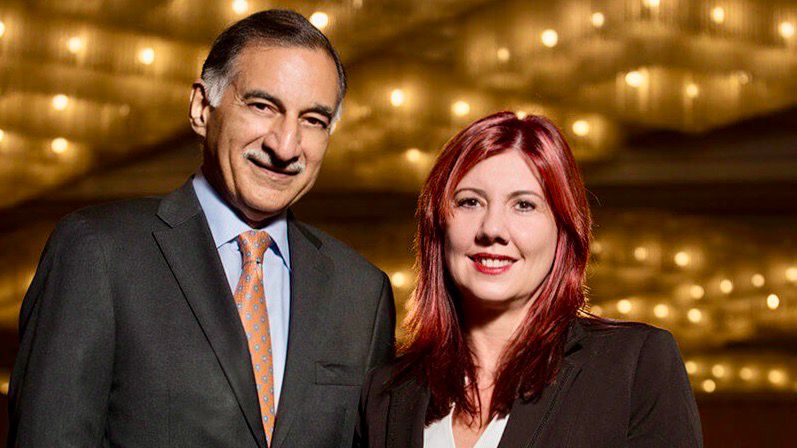FULLERTON, Calif. — With Russia's invasion of Ukraine hitting consumers' pocketbooks, skyrocketing interest rates and rising inflation, economists expect slow economic growth in the near and midterm but could fall into a recession next year.
"There is no easy way, no sugar coating," said Mira Farka, associate professor of economics and co-director of the Woods Center for Economic Analysis and Forecasting at California State University, Fullerton, during the school's spring economic forecast report. "This expansion is one of constant sorrow."
The coronavirus pandemic and government measures to prevent a pandemic-related recession have led to explosive but artificial growth. While the economy has mostly rebounded, it's not sustainable, CSUF economists said.
The U.S. poured $10 trillion into the economy in one year — nearly half of U.S. GDP — an unprecedented move.
The U.S. real gross domestic product is 3% above its pre-pandemic level, CSUF economists said, and the labor market has caught up but still 1.6 million jobs short.
"Real GDP is now 14% higher compared to the dark days of the pandemic, a feat accomplished in six short quarters," economists said. "The average time across recoveries for such growth is a full four years. Even the fastest recovery (at the end of WWII) took 10 quarters to reach the same level. Much like Icarus, who flew too close to the sun and had his waxed wings melted, so too may this recovery have flown too high too soon."
Thanks to government handouts due to the pandemic, American consumers are more prosperous than pre-pandemic. The pandemic forced many to save, and rising home prices for many homeowners meant equity in the bank.
As of Q4 2021, CSUF economists said household wealth had reached $143 trillion — 29% above pre-pandemic. Wage gains are growing at a nearly 6% annual pace, the highest since the early 1980s, economists said. And checking deposits are more than $3.8 trillion, triple the pre-pandemic average of around $1 trillion.
It's not just rich people squirreling away cash. Deposits from individuals below the 50th percentile "have also risen to nearly $250 billion from an average of roughly $100 billion in 2019."
But there are a lot of challenges ahead. The pandemic remains, and new coronavirus variants — and possible pandemic-related shutdowns associated with those — could disrupt the economy's fragility.
Inflation is at 8.5%, and personal consumption expenditures at 6.5% have been the highest since the 1980s. Supply chain, labor shortages, the economic impact of Russia's invasion of Ukraine and the Fed's expected rate hikes are signs of a looming recession.
"As the Fed tightens, and the stimulus money runs out, and fiscal stimulus goes away, the economy is going to be feeling the impact of that," said Anil Puri, the director of the Woods Center for Economic Analysis and Forecasting at CSUF. "It's going to be a treacherous journey for the U.S. economy going forward."
Farka and Puri, the CSUF economists, said they expect slow growth, stagflation, lower employment gains locally and possible national job losses. Payroll employment growth is also expected to decline. And the red hot housing market, which has seen double-digit year-over-year growth in the past two years, will slow amid rising interest rates.
"Those will be the price paid to bring inflation under control," they said.
In the next 10 to 12 months, economists' view of the landscape is "more grim."
"The confluence of an escalating war, rapid rate hikes, unprecedented labor shortages, persistent supply disruptions, higher energy costs, a multi-decade spike in inflation and continued flare-ups in a once-in-a-century pandemic are bound to dim even the most Pollyanna-ish outlook," the economists said in an accompanying report.
The economists said the Fed's hope for an "immaculate soft landing — wringing out inflation without dislodging growth — under these conditions is a herculean task and doubts they'll be able to do so."
Economists believe there is a 50% chance of a recession.
But that it is likely to be much milder compared to the last two.



